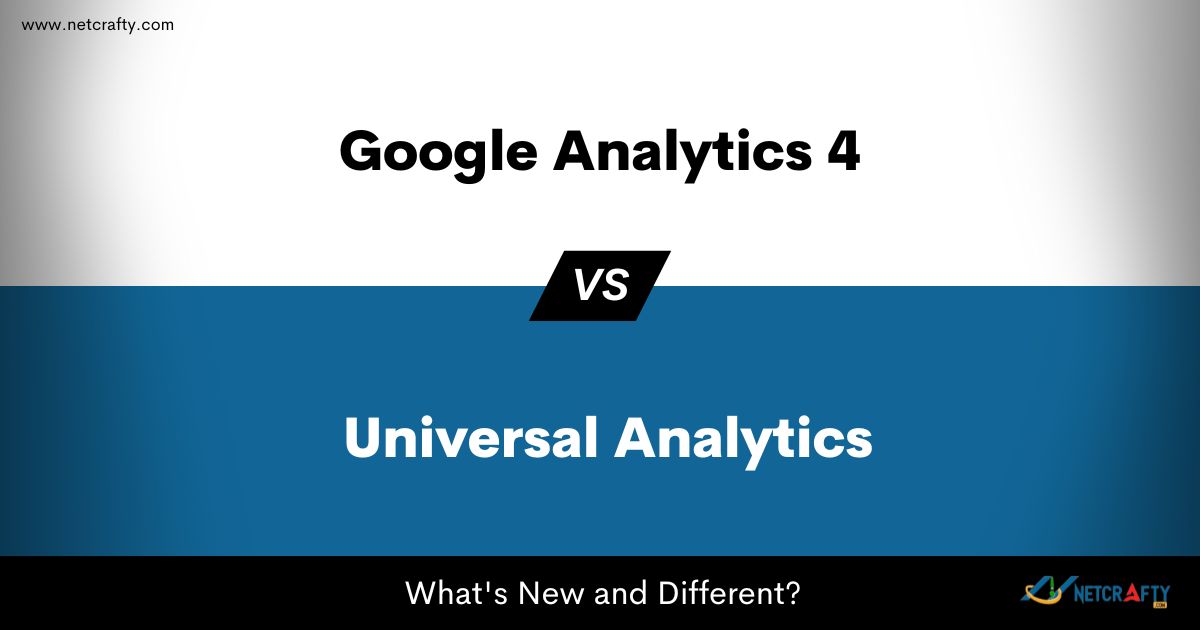In the global digital marketing industry, analyzing website efficiency is essential. Google Analytics has long been the preferred tool for advertisers and company leaders to monitor and analyze their website traffic and user behaviour.
Introduction to Universal Analytics?
Universal Analytics (UA) is the old version of Google Analytics used for session-based data models to track website user interactions. This was designed to track user behaviour within a single session, grouping activities, mobile apps, and other digital devices.
Universal Analytics offers a full perspective of clients. Entrepreneurs and advertisers must understand their target better and customize their marketing strategy accordingly. It monitors user engagement, discovers patterns, and assesses the impact of advertising. Additionally, with UA, companies better understand the public and optimize their marketing efforts to increase ROI.
Introduction to Google Analytics 4?

Google Analytics 4 (GA4) is a modern and advanced version of Google Analytics that captures event-based data from all websites and apps. GA4 has an event-based data model, as page views, user engagement sessions, and other custom events are all considered events. It is a new form of property designed for the future of measurement.
What New Features Does GA4 Have vs Universal Analytics?
Google Analytics 4 from Universal Analytics (UA) has a much better data model. Here, we will examine a key contrast between GA4 and UA, emphasizing what’s new and why this move is important.
1. Event-Driven Data Model
The most important distinction between UA and GA4 is moving from a session-based data model to an event-driven one. Universal Analytics is primarily based on sessions and pageviews, meaning every user visit on your page was divided into sessions, and data points, bounce rate, and time on the page were aggregated per session.
In GA4, everything is tracked as an event. This model provides a more granular view of user behaviour, where even fundamental interactions are recorded as events. The end effect is increased tracking flexibility, allowing for greater customization and deeper insights into how consumers interact with your content.
2. Cross-Platform Tracking
GA4 has been designed for cross-platform tracking, which enables you to track users as they engage with your website, smartphone app, and other digital assets within a single property.
Universal Analytics tracks website data; any mobile app data must be tracked separately.
3. Privacy-Centric Approach
Data privacy has become a major issue as regulations govern how businesses gather and handle consumer information. GA4 has a privacy-centric approach that complies with these requirements; it includes features such as cookieless tracking and data retention settings and is designed to phase out third-party cookies.
While Universal Analytics depended largely on cookies to follow users, GA4 is intended to be less dependent on cookies and identifiers.
4. Enhanced Machine Learning
GA4 uses machine learning to help predict a given user’s actions. In Universal Analytics, machine learning insights were available but limited. GA4-enhanced AI capabilities allow businesses to make more informed decisions based on predictive data, reducing reliance on manual analysis.
5. Real-Time Reporting
Universal Analytics did offer real-time reporting, but it was limited in scope. GA4 offers more advanced real-time reporting, providing a live snapshot of user activities on your website and applications. This is especially useful for firms that rely on time-sensitive data, such as those that conduct live events, introduce new goods, or operate marketing efforts.
GA4 marks an important change in how digital analytics is handled, whereas Universal Analytics has served organizations well for a while. Google Analytics offers more robust and actionable insights.

Leave a Reply